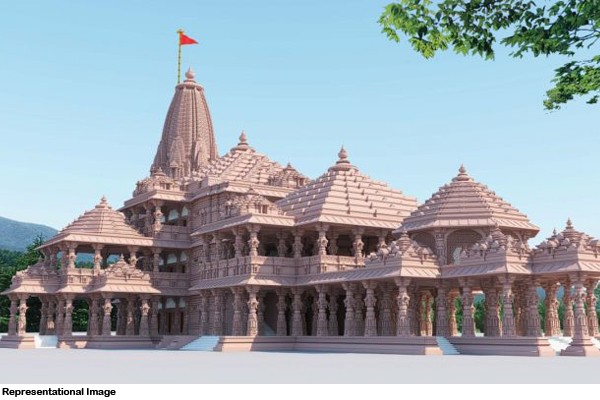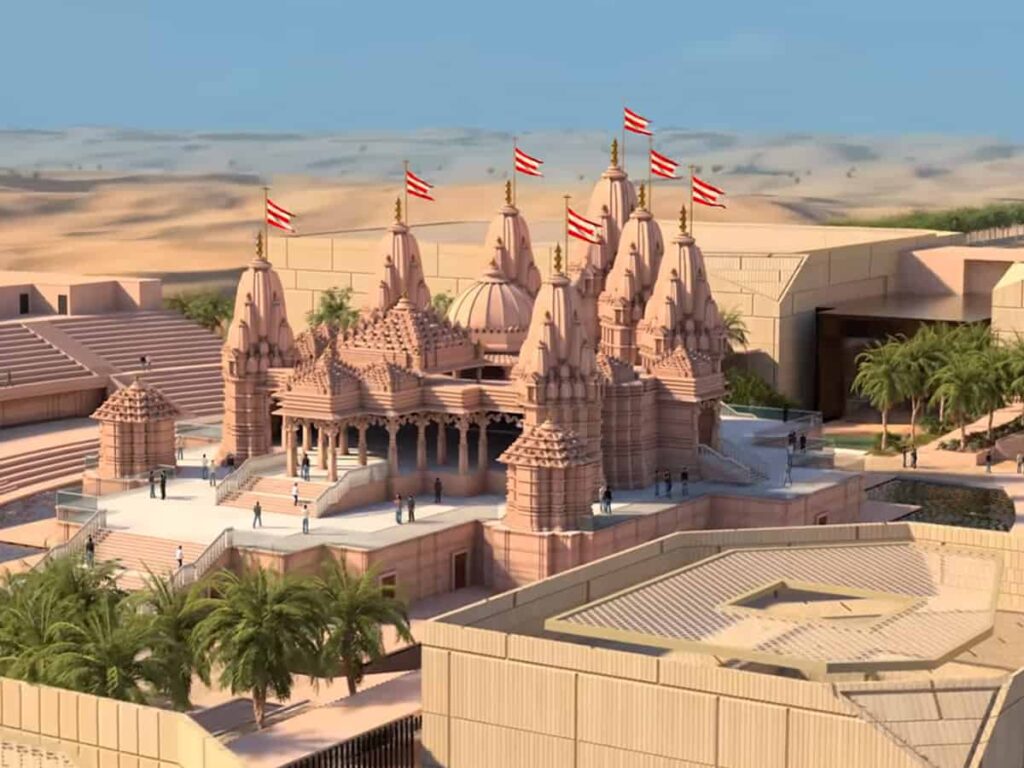Temples Being Built as a Statement of Faith

Sri Ram Janmabhumi Mandir at Ayodhya has already been opened for devotees. It has been pulling crowds from day one. Ramlala was not alone in his tent either. The temple is still under construction and is being managed by “Ram Janmabhumi Tirth Kshetra Trust”. The trust will also monitor its completion.
This will be a complex of seven temples. While Ramlala will occupy the central Garbha Griha, there are six other temples to be built on the ramparts. The main gate is Singh Dwar. There will be three temples for Shiva, Annapurna and Surya towards the right side of the gate. Towards the left side will be temples for Bhagawati, Hanuman and Ganesha. The total length of the almost rectangular rampart is 732 Meters.
The platform over which the five Mandaps and the Garbha Griha are located is sixteen feet high from the ground level. The platform has been built from solid stones. The superstructure has been constructed with stone slabs obtained from Bansipaharpur in Rajasthan which are pink in colour and extensively carved. Steel has not been used. Stone slabs have been interlocked with copper bands and nails under the technological supervision of L&T engineers and designers. The structure has a life span of over one thousand years. There seems to be no shortage of funds for the trust because generous donations are pouring in even for non-stop langars at several localities. The temple is a mix of styles from the south India. The Mandaps in a row leading to Garbha Griha is based on a traditional concept.
The temple at Ayodhya fills up a vacuum which was being felt in North India. Although Ayodhya existed for thousands of years, its glorious chapter begins now. It is likely to surpass many pilgrim destinations. In 1990 when Karasevaks were facing police action, the Indian economy plummeted. India had to resort to mortgaging its gold reserves also. When the Supreme Court passed judgement in favour of Ramlala the same year India became the fifth largest economy in the world getting ahead of the United Kingdom. On the day of Pran Pratistha, on 22nd January 2024, India became the fourth biggest Stock Market in the world by overtaking Hong Kong.
The ISKCON temple at Mayapur in West Bengal:

This temple is going to be another statement of faith located in the Nadia district of West Bengal which is being constructed on 750 acres for Rs. 8000 crores by the International Society for Krishna Consciousness (ISKCON). Media reports say that it is going to become the largest temple in the world. After Ramlala temple at Ayodhya, it will be Radha Krishna temple at Mayapur. The main features of the temple will be the following.
- The modern temple is being built at the headquarters of ISKCON at Mayapur where a Krishna temple by ISKCON already exists.
- The temple will be known as the “Temple of Vedic Planetarium” because a planetarium depicting Hindu concepts will be constructed.
- The chairman of the temple construction committee is the renowned American Automobile company’s Alfred Ford (nicknamed Ambarish Das) whose personal donation is Rs 500 crores.
- The entire project costing Rs 8000 crores is being constructed on financial donations.
- The project has three parts. The first part is the main Radha Krishna Mandir which is 70% complete and will be open from 2025. The second Narsinha Deo Mandir will open in March 2024. The third part of Vedic Tara Mandal with a 100-acre park will be completed by 2030.
- The Puja floor of the main temple will spread over 1.5 acres which will have the capacity to accommodate 10,000 devotees at a time.
- The dome of the main temple will have a diameter of 177 feet and resembles the Russian Church dome. It will remain studded with gold.
- Marbles from Makarana of Rajasthan, Vietnam, Brazil, Spain and Bolivia are being utilized.
- Experts from 10 countries numbering more than 10,000 are engaged in construction work. Stainless steel-coated Sariya (iron rods) are being used for the longevity of the structure. Granite is coming from Karnataka.
- The main temple with the highest dome tower will be 350 feet high from the ground level. It will have a splendid Garbha Griha. The temple is being constructed at the confluence of a small river with the Ganga on an alluvial island for which strong foundational work has been done.
- The construction site is 130 Kilometers away from Kolkata.
The structure above the Garbha Griha and the prayer hall is particularly interesting. It is not like the common tower (Shikhar) found in Indian temples. It is not a perfectly Islamic architecture either. It is not associated with commonly found churches of Christians. It seems a combination resembling a big church bell. It is being constructed as a replica of the Faberge Egg architecture of a Russian church. Its diameter of 177 feet is stupendous.
The B.A.P.S. Temple of Abu Dhabi (U.A.E)

This temple is going to be inaugurated by Prime Minister Narendra Modi on the 14th of February 2024 on the Basant Panchami day this year. The Pran Pratistha of the deities will be ceremonised on this day. Its foundations were laid six years ago. The main features of the temple are as follows.
- The temple is being constructed by Bochasanwasi Akshar Purushottam Swami Narayan Sanstha (BAPS). The cost of the project was Rs. 700 crores.
- The temple is located in Abu Dhabi’s cultural zone spreading over an area of 27 acres. The temples have seven towers (Shikhar) representing the seven emirates of the United Arab Emirates (UAE).
- The main temple will have themes connected with the Vedic concepts of earth, water, fire, ether, and air in a particular association with the Moon which is highly significant for the Arabic world. This temple will portray the co-existence and amiability among various religions. The opportunity for this has been provided by the rulers of the UAE.
- It is a Hindu temple in which seven deities will be installed including Ram-Sita, Shiva-Parbati and others. The three-dimensional images of the main characters and stories related to Ramayan, Mahabharat, Jagannath Yatra, and Shiva Puran are available on the exteriors of different temples.
- 2000 skilled stone carvers from Rajasthan and Gujarat have completed carvings on marble rocks from Rajasthan.
- The latest available technology has been employed by fitting censors on foundation stones for recording vibrations, air pressure, wind speed etc. The temple complex will have a Prayer Hall, Community Centers, Library, children’s Park, Car Parking and Amphitheaters.
- The sacred rivers of India, Ganga, Yamuna and Saraswati have been visualized. Sands from the seven emirates have also been collected. A wall of Harmony on the campus will spread the messages of different religions. Themes from Arabic, Chinese and Mesopotamian culture have also been included.
- The towers are also of special types representing a mix of shapes. Round towers of North Indian style are common.
Reference:
Dainik Bhaskar (20.01.2024 to 27.01.2024)
I am a Vedic astrologer by profession. I have done Jyotish Acharya from Bhartiya Vidya Bhawan. I am devoted to my Sadguru Shri Sai Nath of Shirdi. I am also interested in spirituality. I love to guide people.